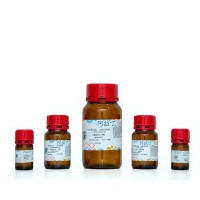Ultracentrifugation Technique for Measuring the Binding of Peptides and Proteins to Sucrose-Loaded Phospholipid Vesicles
互联网
互联网
相关产品推荐

N_P_PA/N_P_PA蛋白Recombinant Human Natriuretic peptides A (N_P_PA)重组蛋白Atrial natriuretic factor prohormone;Atrial natriuretic peptide prohormone;Atriopeptigen ;Cardiodilatin;preproCDD-ANF蛋白
¥1836

Mannan Binding Lectin/MBL2 兔多克隆抗体
¥1699

Recombinant-Drosophila-melanogaster-CAAX-prenyl-protease-2SrasCAAX prenyl protease 2 EC= 3.4.22.- Alternative name(s): Farnesylated proteins-converting enzyme 2; FACE-2 Prenyl protein-specific endoprotease 2 Protein severas
¥11466

KRAS (G12C), Isoform A, His-Tag, GppNHp-Loaded Recombinant
询价

OFET微型探针,Measuring Adaptor for Back-Gated OFET Interdigitated Substrates,阿拉丁
¥21440.90

